NVIDIA GeForce 6800 Ultra: The Next Step Forward
by Derek Wilson on April 14, 2004 8:42 AM EST- Posted in
- GPUs
Anisotropic, Trilinear, and Antialiasing
There was a great deal of controversy last year over some of the "optimizations" NVIDIA included in some of their drivers. We have
NVIDIA's new driver defaults to the same adaptive anisotropic filtering and trilinear filtering optimizations they are currently using in the 50 series drivers, but users are now able to disable these features. Trilinear filtering optimizations can be turned off (doing full trilinear all the time), and a new "High Quality" rendering mode turns off adaptive anisotropic filtering. What this means is that if someone wants (or needs) to have accurate trilinear and anisotropic filtering they can. The disabling of trilinear optimizations is currently available in the 56.72
Unfortunately, it seems like NVIDIA will be switching to a method of calculating anisotropic filtering based on a weighted Manhattan distance calculation. We appreciated the fact that NVIDIA's previous implementation of anisotropic filtering employed a Euclidean distance calculation which is less sensitive to the orientation of a surface than a weighted Manhattan calculation.
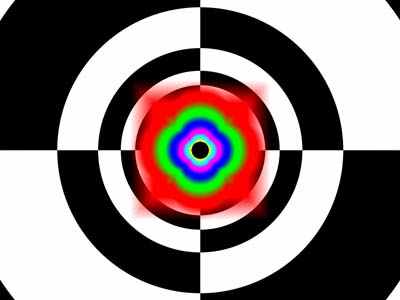
This is how NVIDIA used to do Anisotropic filtering
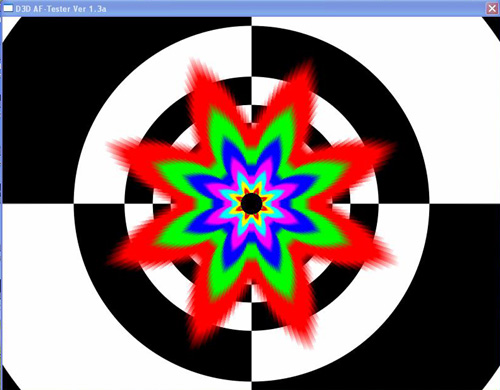
This is Anisotropic under the 60.72 driver.
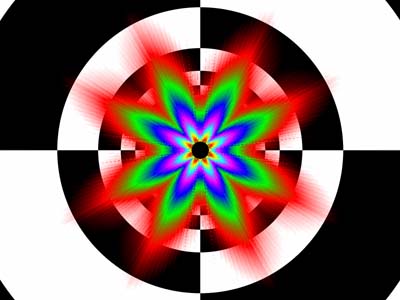
This is how ATI does Anisotropic Filtering.
The advantage is that NVIDIA now has a lower impact when enabling anisotropic filtering, and we will also be doing a more apples to apples comparison when it comes to anisotropic filtering (ATI also makes use of a weighted Manhattan scheme for distance calculations). In games where angled, textured, surfaces rotate around the z-axis (the axis that comes "out" of the monitor) in a 3d world, both ATI and NVIDIA will show the same fluctuations in anisotropic rendering quality. We would have liked to see ATI alter their implementation rather than NVIDIA, but there is something to be said for both companies doing the same thing.
We had a little time to play with the D3D AF Tester that we used in last years image quality article. We can confirm that turning off the trilinear filtering optimizations results in full trilinear being performed all the time. Previously, neither ATI nor NVIDIA did this much trilinear filtering, but check out the screenshots.

Trilinear optimizations enabled.
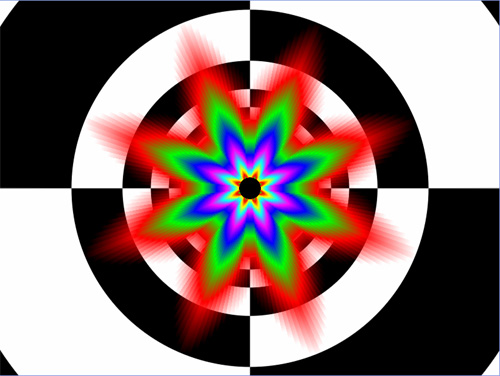
Trilinear optimizations disabled.
When comparing "Quality" mode to "High Quality" mode we didn't observe any difference in the anisotropic rendering fidelity. Of course, this is still a beta driver, so everything might not be doing what it's supposed to be doing yet. We'll definitely keep on checking this as the driver matures. For now, take a look.

Quality Mode.
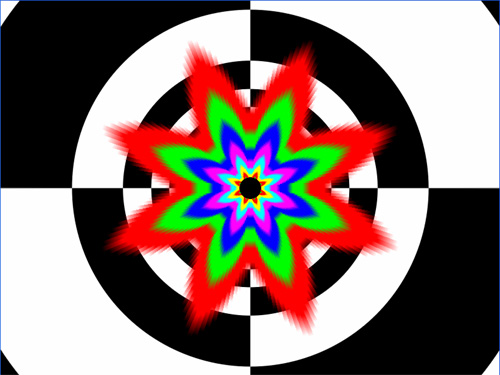
High Quailty Mode.
On a very positive note, NVIDIA has finally adopted a rotated grid antialiasing scheme. Here we can take a glimpse at what the new method does for their rendering quailty in Jedi Knight: Jedi Academy.
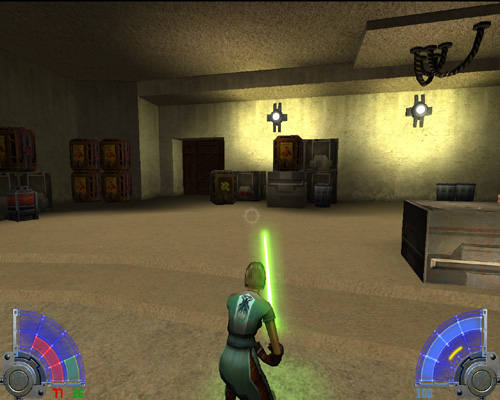
Jedi Knight without AA
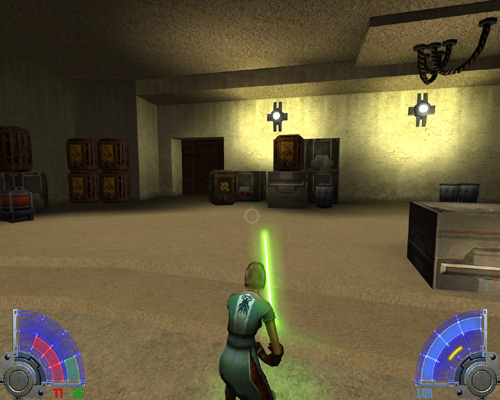
Jedi Knight with 4x AA
Its nice to finally see such smooth near vertical and horizontal lines from a graphics company other than ATI. Of course, ATI does have yet to throw its offering into the ring, and it is very possible that they've raised their own bar for filtering quality.










77 Comments
View All Comments
Deanz79 - Wednesday, April 14, 2004 - link
AWESOME!! I wouldnt mind borrowing the card for the night :PTrogdorJW - Wednesday, April 14, 2004 - link
There are a few things I take away from all the previews of the 6800 Ultra.One is that ATI is going to be hard pressed to actually top it. Both will have 16x1 designs, but I don't think ATI will have the 32x0 option, which might be important for games with lots of shadows. (I believe the ATI cards are going to be around 180 million transistors, which leads me to believe that they will not have quite as many features.) I also doubt that ATI will actually support fp32 this time around, which aces DX9.0c/PS3 support from them. That may or may not really matter.
The next thing is sort of related to the first point: Nvidia now has more features that ATI, but there are still some bugs to work out. DX9 games that were optimized for NV3x seem to be dropping quality on the 6800U. Hopefully the fix to use fp32 instead of fp16 will be both easy and not result in a major performance drop. We'll have to wait and see, though. Other sites have shown quite a few areas that need driver revs, but that's nothing new. At least with NVidia, I feel confident their driver team will fix any major issues and probably increase performance a decent amount as well.
I also agree with someone else that said the previews might be lower clocked than the final release. First, the RAM is spec'ed for 600 MHz, which makes it odd that they're running at 550 MHz. They may not hit 600, but 575 or maybe 585 seems likely (or at the very least that should be an OC'ing option). The core is currently at 400 MHz, and I think they might be able to bump that up a bit more, but 222 million transistors at .13 micron might not go much higher. We'll have to see what some of the shipping cards from GB, A-bit, Asus, etc. offer in terms of OC'ing headroom, as they might offer better cooling solutions.
Related to the heat and clockspeed, I'm a little shocked at the heatsink/fan design. If they're going to all the trouble of having a huge HSF, I can't see any reason to not switch the direction it blows and have the Ultra version vent the hot air outside the case. Maybe noise was the reason, or component placement, but I would really prefer to have anything that size making use of external venting. It would be like having your power supply sucking air into the case instead of blowing out... Sure, it might cool the PS better, but the case temp would jump dramatically.
My final thought is that it will be very interesting to see what sort of price and performance can be had from the regular 6800 cards, and even the 6800XT. I didn't think there would be a "soft-mod" option for Nvidia this round, but it appears I was wrong. Unless NVidia has some way of preventing this from being done. Regardless, if the 6800U is going to start at $500 and the 6800 will go for $300, we could be looking at a 6800XT for $200 or so. It should also have at least the performance of the 5950U, and most likely better.
Incidentally, I'm betting the mid-range cards (i.e. 6500 or 6600 or whatever) will not really be that great, though, as they'll likely trim them down to 2 or 4 vertex pipelines and 4 or 8 pixel pipelines, so they'll end up looking like something inbetween the 5700U and the 5900XT. And don't look for help from ATI here, as the X300 and X600 look to be renamed 9600SE and 9600XT parts, respectively (a la the Radeon 9000 to 9200 line).
IamTHEsnake - Wednesday, April 14, 2004 - link
Whoops! The Radeon 9800 xt only scored 6138 while NV40 scored 12350+ in 3DMark'03. That Ladies and Gentlemen is 2x as many points!IamTHEsnake - Wednesday, April 14, 2004 - link
Wow I read the review and all I can say is WoW. I read somewhere else that this card scored 12250+ in 3dMark'03 while the 9800 xt scored 8350 on the same system, same set-up. From one generation to the next 33% increase is not bad. not bad at all.Come on ATi! I'm rootin' for you!!!
Schadenfroh - Wednesday, April 14, 2004 - link
what mobo and mobo drivers were used? i hear that the nforce2 provides an unfair performance advantage for nvidia, even tho the ati should run at the same speed as on a differant motherboard, nvidia just gets an extra boostWarder45 - Wednesday, April 14, 2004 - link
I want to see the multimedia bench's. Hopefully another article with AMD vs Intel.AlexWade - Wednesday, April 14, 2004 - link
The thing is freakin' huge! I'm willing to bet dollars-to-doughnuts that ATI's new card isn't the size of a football. Even if this huge beast tops in performance, the extra 20 pounds rules out LAN parties.I'll admit, the performance is great. But if ATI is smaller and performs near, or slightly below, then that is the one to buy.
AlexWade - Wednesday, April 14, 2004 - link
The thing is freakin' huge! I'm willing to bet dollars-to-doughnuts that ATI's new card isn't the size of a football. Even if this huge beast tops in performance, the extra 20 pounds rules out LAN parties.I'll admit, the performance is great. But if ATI is smaller and performs near, or slightly below, then that is the one to buy.
Reflex - Wednesday, April 14, 2004 - link
Personally I'll wait to see the budget line on these, I refuse to spend more than $200 on a video card. Chances are I'll end up going Ati however, the 2D video quality is just noticably better, and most of my time on my PC is spent reading, not gaming.Oh well, at least the gamers can be happy again. Too bad the AGP slot is not at the bottom of the motherboard, could build some interesting external vented cases if the card could stick that fan outside the case. ;)
Reliant - Wednesday, April 14, 2004 - link
Any ideas how the Non Ultra version will perform?